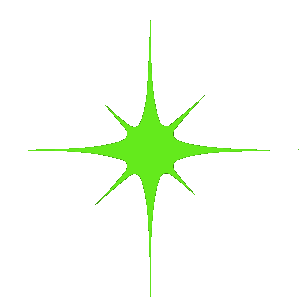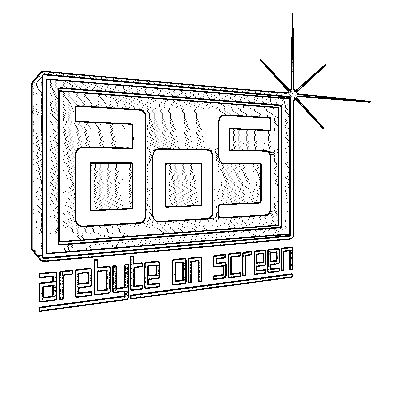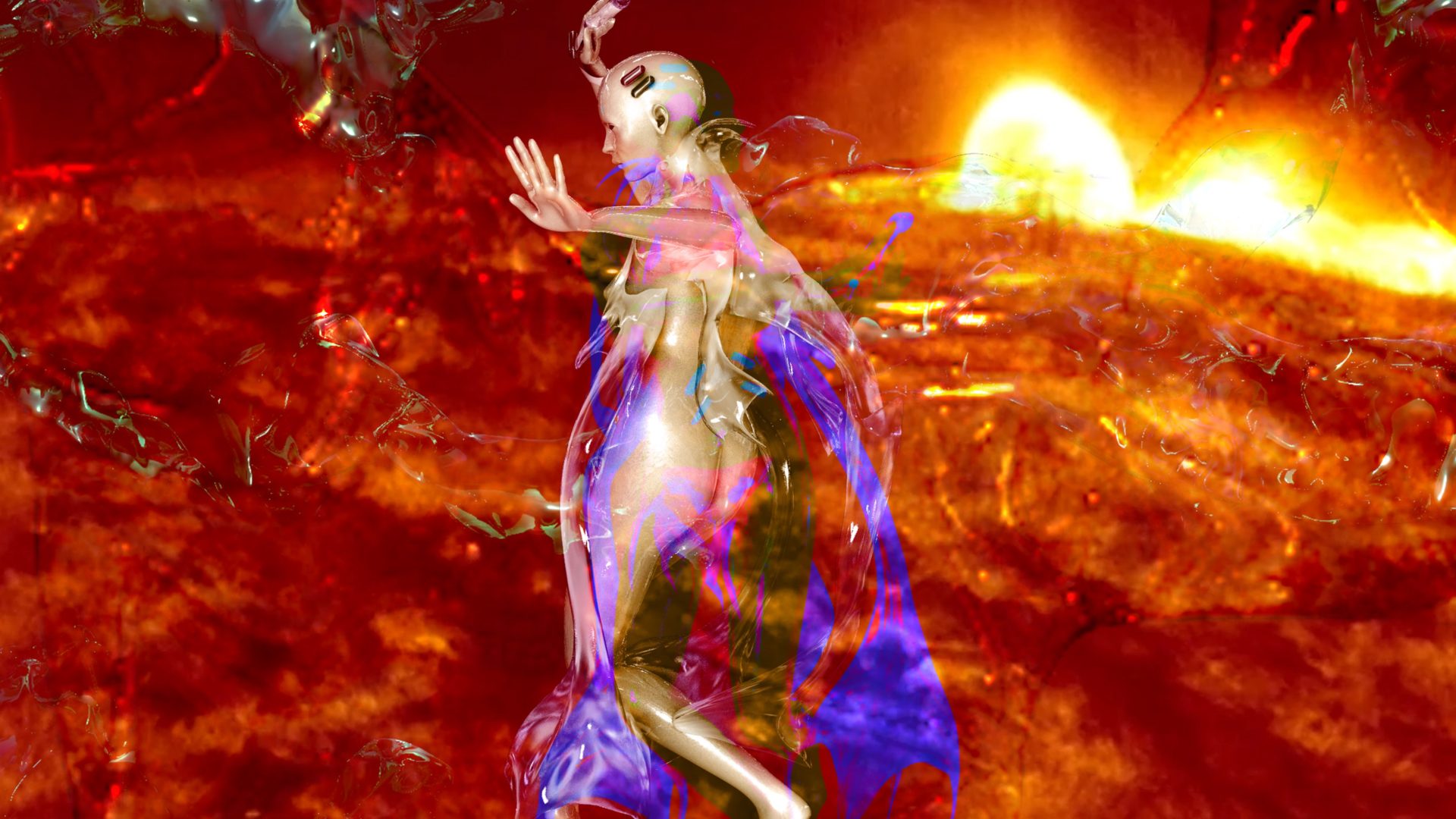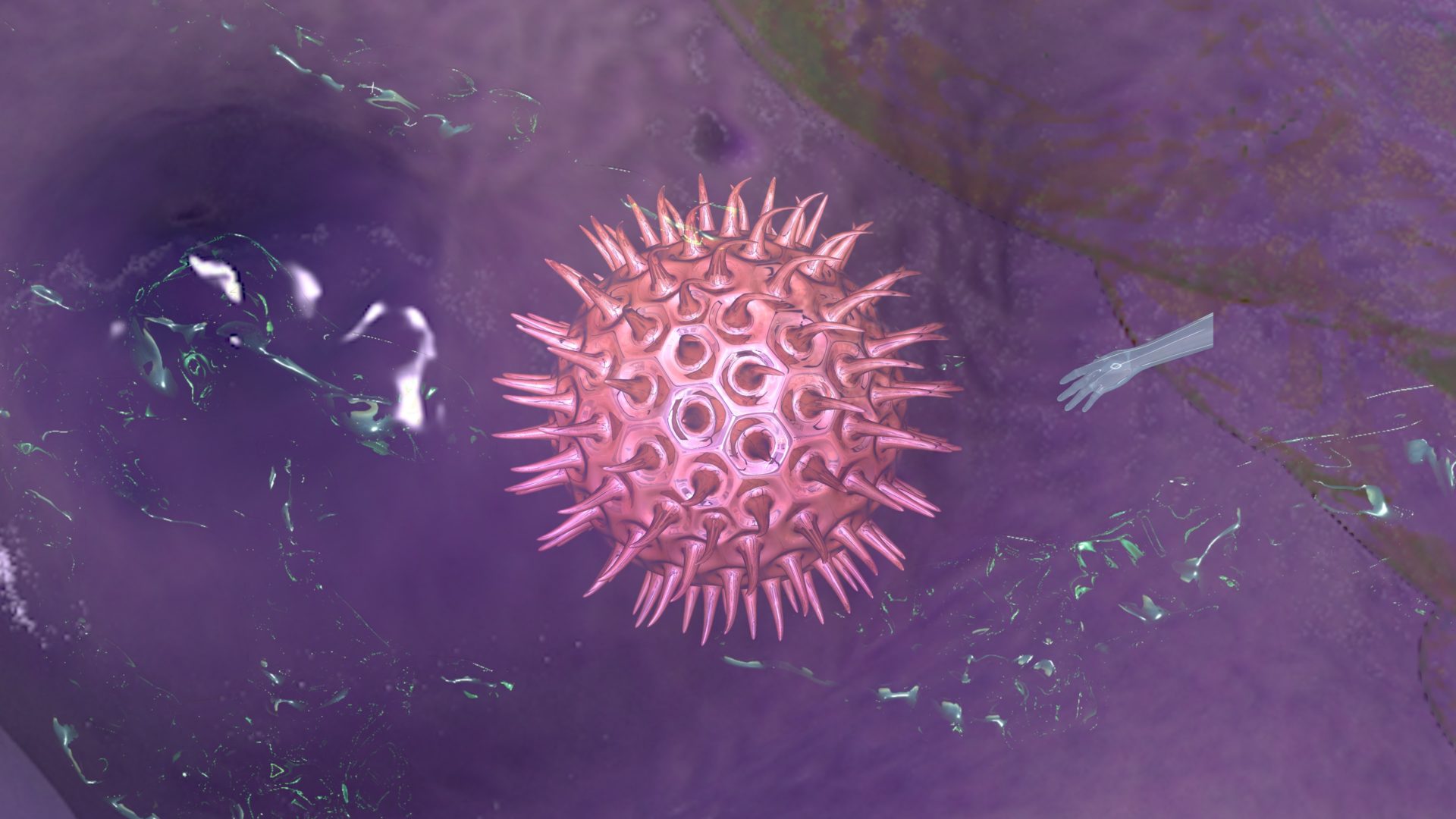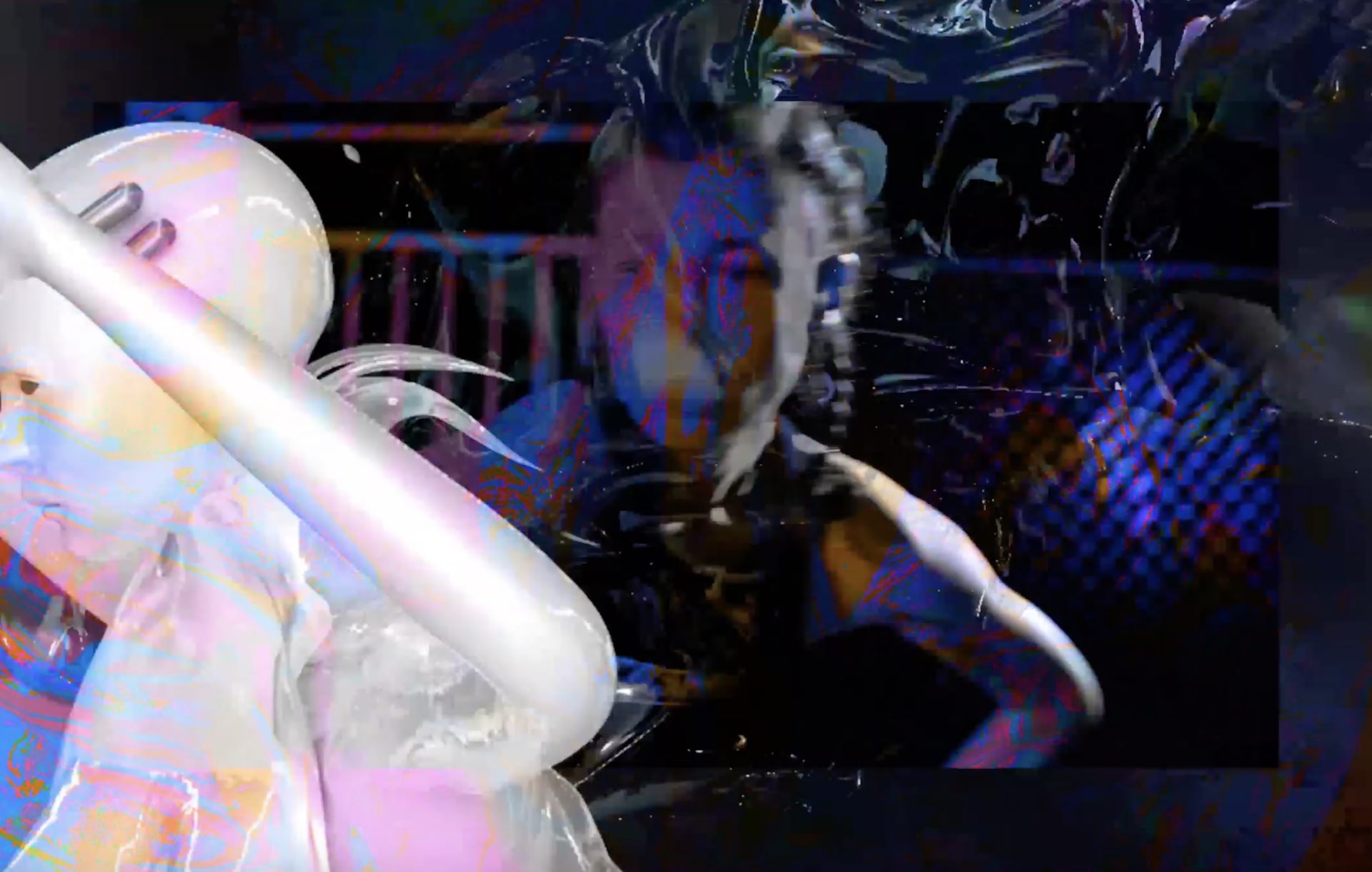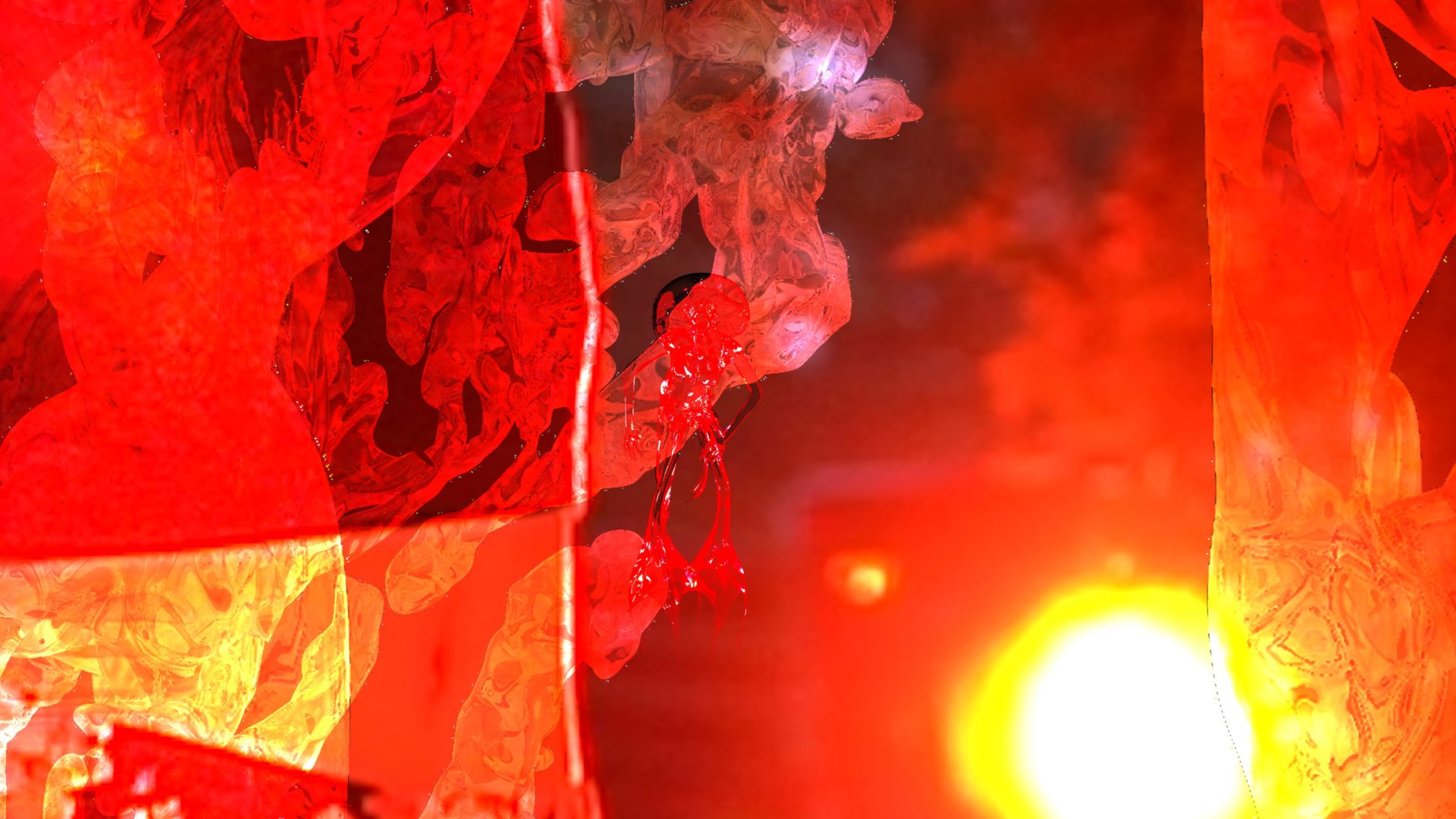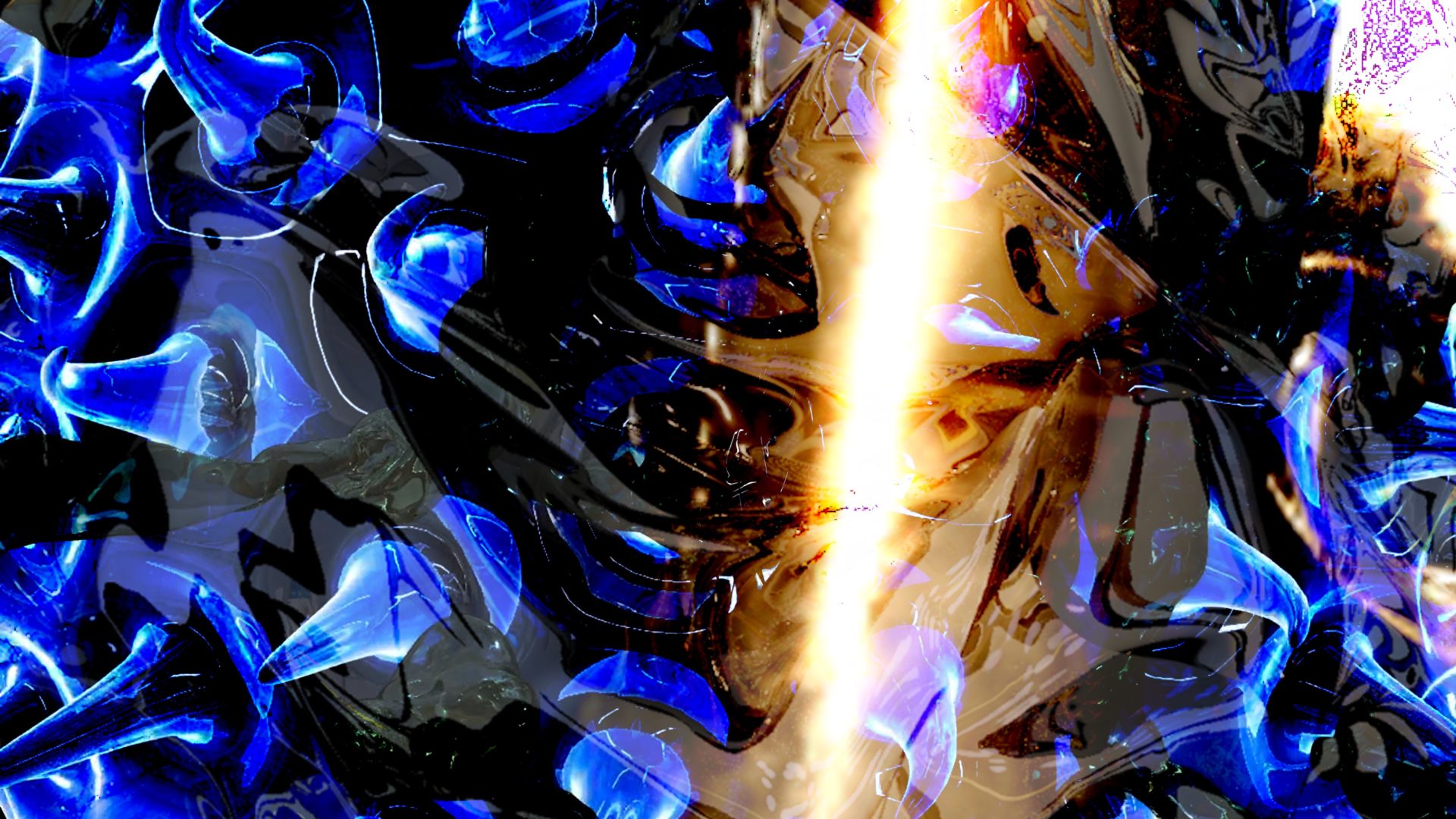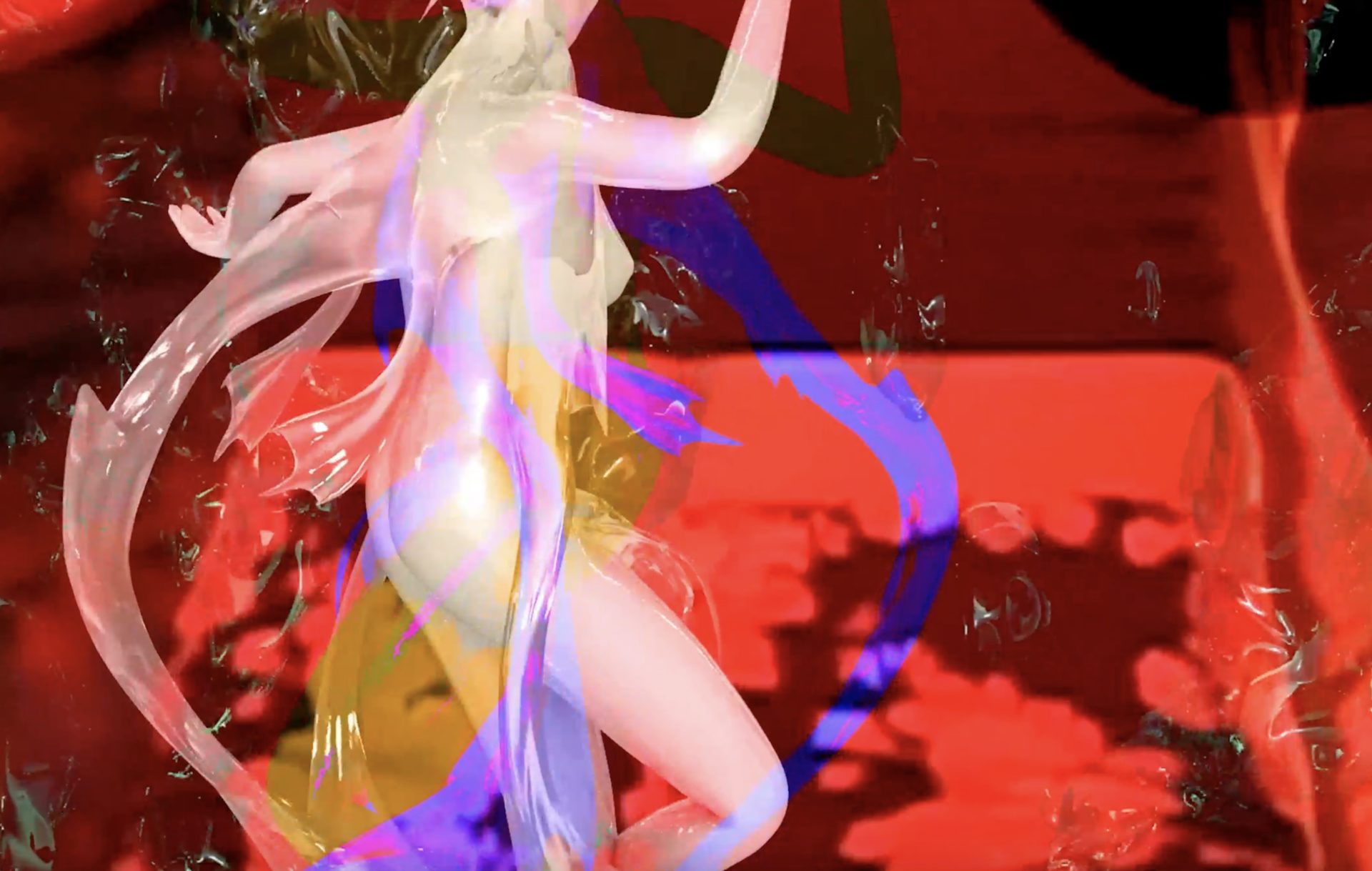
Johanna Bruckner
This video work approaches the phenomena of atmospheric escape and its emerging synthetic bodies. These body formations are synthetic bodies as they consist of geo-chemical mixtures between synthetic gas and organic substances; thus shaping more-than-human bodies. Carbon, xenon, volcanic emissions and mercury of fossil fuels escape as gaseous toxicity into the exosphere and form distinct synthetic bodies. These are figures between immanence and transcendence, reality and illusion, reason and its absence, science and fiction. In a bleak post-nuclear landscape, radioactive waste masks the sobering reality of toxic and synthetic legacies beyond planetary geographical imagination. These speculative bodies are equipped with the ability to explore the conditions for existences in more-than-human worlds, as metamorphosis of responsive in/organic matter.
To deal with the increasing energy of sunlight that the planet is faced with, it responses through synthetic deposition: In a process of ultraviolet decomposition, the gases absorb light. Through the energy of charged fellow-particles, gases are carried up by and through the atmosphere while evaporating and decomposing into atoms, to overcome gravity in a process called synthetic drag. This form of escape is analogue to the solar storm, radically charged heat particles blown from the Sun into erosive space. The atoms interact with the magnetized solar wind and are dragged into a tail while changing their atomic sex.
There are also bodies of black gas. Black gas exceeds its means as finely powered carbon produced by burning natural gas, a fill material for synthetic nanotech driven production on the planet. As the density of the expanding gas decreases, the particles continue to move outward as dust. In these atmospheres of transition the sublimation is not uniform, and gas velocities are not constant, responsible for what is called synthetic multispecies coma.
I am interested in how these synthetic mineral body composites and their languages can be imagined, which are caused by synthetic escape, gravitational waves and their micro affinities. How can we aesthetically access these crystallizations of bodies caused by a/biotic substances. Those, which are formed by the forces and traces of light energy and planetary winds – between matter, atmosphere and indeterminate desire? How can they help us to imagine possible future worlds? Synthetic futures? I here turn to the occupied space beyond the Earth, and reclaim its implicit alien-ness.The here determined alignment with the molecular materialization of space signals a mode of decolonization, along with the strength, the fragility and the ephemerality of its macromolecular body formations.
This video series aims to provide access to worlds in which humans and non-human bodies are entangled – worlds, whose bodies and its environments are increasingly produced in synthetic, laboratory processes. As synthetic figures and intimacies. Imagination is a central of this work, to enable infrastructures that allow us live with the synthetic, toxic order of the world and its bodies.
– Johanna Bruckner –
Johanna Bruckner
*1984 in Vienna, Austria
Johanna Bruckner is interested in the conditions of labour that have been emerging in response to the technologies of communicative capitalism. She often works with social and political references that emerge within the ruptures and struggles of our so-called realities. Dancers and performers are significant Bruckner’s work, films and video installations; in order to question the relation between subjectivities that are shaped by algorithms, seeking to re-articulate (historic) knowledge and cultural-economic realities.
Bruckner’s artistic research and practice are an attempt to question the paradoxes and new potentialities of social cohesion in the dissolution of human agency today.
She has studied Fine Arts, Cultural Studies and Social Anthropology in Vienna, Berlin, New York, Stockholm and Hamburg and teaches at the Zurich University of the Arts.
Her work is shown internationally, most recently, at the Haus der Kulturen der Welt, Berlin, transmediale 2020, the Kunstraum Niederösterreich, ZKM, the Zentrum für Kunst und Medien, Karlsruhe, the 57th Venice Biennale, the CAC Centre d’Art Contemporain Geneve, Galerie EIGEN+ART Lab, Berlin, 16th Venice Architecture Biennial, Deichtorhallen Hamburg, Sammlung Falkenberg; Galerie Reflector Contemporary, Bern, KW, Institute for Contemporary Art, Berlin; the Migros Musem für Gegenwartskunst, Zürich; the Villa Croce, Museum for Contemporary Art, Genoa; the Kunsthaus in Hamburg; the Kunstverein Harburger Bahnhof, Galleri Box, Cabaret Voltaire at Manifesta 11, Zurich, dOCUMENTA (13). Bruckner has lectured at various universities and institutions including the Bauhaus University of Weimar, the Lucerne School of Art and Design, Zurich University of the Arts and the BAC Center Contemporain in Geneva. Her work was arwarded by numerous grants, most recently, she received the Hamburg Stipendium for Fine Arts (2016), was awarded a scholarship holder for the studio program at the Banff Center for Visual Arts in Canada in 2015, and she is currently a fellow at the Sommerakademie Paul Klee (2017-19).

HYPERTENSION presents two projects by artists Katrin Niedermeier and Johanna Bruckner as an exhibition extension, connected to the upcoming exhibition at PYLON-Lab.
What are significant properties that constitute the human body and how will these properties change over time?
If the human 1.0 experienced the technological revolution in the 20th century and the human 2.0 the digitalisation of itself and its surrounding environment, what will it look and feel like to become and be a human 3.0 in the 21st century and a more distant future?
How will human interactions be structured in the future and will they still be experienced viscerally and virtually? What will human communication sound like and what thoughts will be shared?
The artworks newly created for AOS present concepts of the human body in its alignment with its environment, including the virtual space and of its possible future manifestation. The artists’ works visualize and reflect possible current and future scenarios of human expression, intimacy and body related issues in the virtual and the analogue space. PYLON will present video- and text-based works along with graphic content on AOS that are not only the framework, but an integral part of the individual artworks. HYPERTENSION on AOS therefore serves not only as a prologue to the upcoming exhibition at PYLON-Lab IRL but will be an extension and reader, complementing the encounter with the works and helping to immerse in the content on both a notional and reciprocal level.

PYLON is a hybrid of physical art space and online archive for contemporary media and time based art, run by Julia Schmelzer and Thomas Schmelzer.
PYLON encourages its on- and offline audience to engage with experimental approaches of contemporary art in a digitizing time and society through its physical art space PYLON-Lab and its accompanying online platform PYLON-Hub.
PYLON facilitates stimulating and immersive encounters with contemporary media based art by some of the most exciting and innovative contemporary artists. As an art space, PYLON-Lab showcases curated experimental media and interdisciplinary artworks by international artists like Jakob Kudsk Steensen, Elizabeth Orr, Lawrence Abu Hamdan and many others. The works and projects presented via PYLON incorporate distinct approaches to new and emerging media, raising awareness of poly-cultural shiftings, technological and scientific utopias as well as future-oriented technologies and concepts.
PYLON is set to create and share unconventional synapses between art and disciplines such as science, architecture and further social phenomena.
